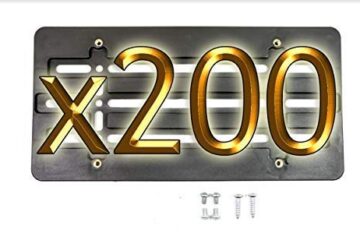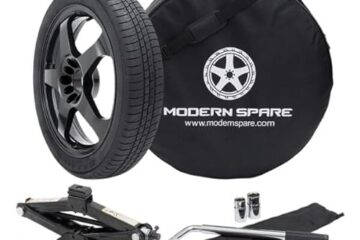5 Popular Brands Makes The Best Hydraulic Roller lifters
Your engine’s camshaft and valves are like a synchronized dance team. Lifters are the crucial choreographers, ensuring every movement is perfectly timed and powerful. Notably, we’re focusing on hydraulic roller lifters, the choice in many modern engines. They aren’t just for cruising comfort anymore – properly selected hydraulic roller lifters can unleash your engine’s hidden potential.
The problem? “Best hydraulic roller lifters” is as subjective as arguing over your favorite car color. Your specific camshaft, driving style, and wallet size all play a part. In this guide, we’ll go beyond brand name battles to give you the tools to make an educated lifter choice.
Key Takeaways
- The ideal lifter balances performance needs and your engine’s overall build.
- Price and performance are closely linked in the lifter world.
- Lifters don’t exist in a vacuum – compatibility with other components is crucial.
- Don’t underestimate the importance of proper setup for lifter longevity.
- There are scenarios where off-the-shelf options won’t cut it.
- Understanding the nuances behind lifter design will help you avoid costly mistakes.
Defining “Best” Lifter Features
It’s tempting to chase big brand names or the latest tech when it comes to lifters. However, the factors below will significantly shape what makes a lifter thrive in your build:
- Longevity: High-quality lifters employ premium internals (bearings, plungers, etc.) and tighter manufacturing tolerances. This translates to handling the repeated abuse of high RPMs and aggressive cam profiles without prematurely failing.
- Performance Profile: Are you aiming for raw street/strip power, budget-friendly reliability, or absolute top-end track dominance? Lifter designs (link-bar, tie-bar, cartridge-type) impact how well they perform across the rev range.
- Compatibility: This is paramount. Your lifter and camshaft must work in perfect harmony. Mismatched pairs create a recipe for poor power, excessive noise, or worse – catastrophic failure. Pushrod length, oil viscosity, and even the rest of your valvetrain (rockers, springs) need to be considered.
- Oil Considerations: Don’t overlook the humble engine oil. Oil weight and additives directly influence lifter behavior. Some higher-performing lifters may demand specialized oils for optimal function.
- Price: The reality is performance lifters aren’t cheap. Higher tiers deliver improved materials, tighter tolerances, and advanced design, all of which come at a cost. That said, “value” options still exist if you’re willing to compromise slightly.
Brands Make The Best Hydraulic Roller lifters
The hydraulic roller lifter market features several key players, each offering distinct advantages and suiting different budgets and build styles. Let’s examine some of the industry leaders:
Isky HPx Silver Needle Bearing Hydraulic Roller Lifters
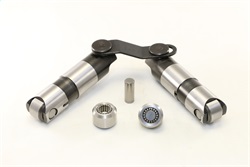
Isky has earned a reputation for manufacturing incredibly robust valvetrain components. Their HPx Silver Needle Bearing hydraulic roller lifters embody this, delivering exceptional high-RPM stability that allows them to handle the demands of aggressive camshaft profiles. These lifters are an excellent choice for performance street engines and even dedicated race engines.
However, this top-tier performance comes at a cost, with Isky HPx lifters being notably more expensive. Additionally, their needle-bearing design can produce slightly more valvetrain noise than cartridge-type lifters, a factor to consider for more subdued street builds.
| Features | Pros | Cons |
|---|---|---|
| Precision-ground needle bearings for reduced friction, high-strength alloy steel body, optimized internal oil metering for aggressive cam profiles. | Proven durability in high-stress applications, fast lifter response for maximum RPM potential, ideal for builds prioritizing all-out performance. | Premium price point, slightly increased valvetrain noise due to needle-bearing design, meticulous attention to valvetrain setup required for optimal longevity. |
COMP Cams Evolution Hydraulic Roller Lifters

COMP Cams Evolution series lifters feature an advanced cartridge design prioritizing consistent operation and longevity, even at high RPMs. The cartridges help dampen harsh engine harmonics, promoting overall engine health. COMP Cams’ wide lifter range accommodates everything from mild street builds to extreme performance applications. Despite this versatility, Evolution lifters still command a premium price. It’s essential to research specific camshaft compatibility, as some limitations may exist.
| Features | Pros | Cons |
|---|---|---|
| Internal cartridge design for enhanced high-RPM stability, heat-treated and nitrided components for wear resistance, broad range of lifter body diameters to suit various application needs. | Excellent RPM consistency, reduced harmonic disruption for quiet operation, versatile range accommodates numerous engine and camshaft combinations. | Still in the upper price tier, some models have specific cam lobe clearance requirements, cartridge design may add slight extra weight compared to simple link-bar types. |
Morel Lifters
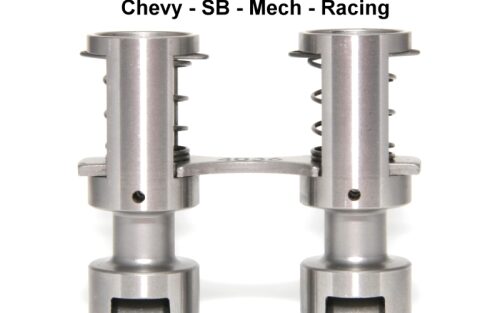
Morel boasts an extensive lifter catalog, offering solutions for basic rebuilds through to the most demanding performance builds. They are known for producing durable, reliable lifters. The sheer number of options within Morel’s lineup requires careful selection to match your specific project goals and budget, as their diverse series vary in price accordingly.
| Features | Pros | Cons |
|---|---|---|
| Depending on the series, features include tie-bar or link-bar construction, EDM oil feed holes for precision, varying plunger and spring travel to support different camshaft demands. | Massive variety to match nearly any engine build, proven reputation for strength, various price tiers ensure an option for most budgets. | Requires in-depth knowledge to navigate their vast catalog, entry-level series may prioritize rebuild-level longevity over peak performance potential. |
Lunati

Lunati hydraulic roller lifters prioritize value within the performance lifter market. Their focus lies in classic link-bar construction, which delivers reliable operation in engines utilizing mild to moderate camshafts. Often bundled in complete sets of 16, Lunati offers a compelling turnkey solution for common V8 engine rebuilds.
Builders aiming for affordability and simplicity over cutting-edge high-RPM features will find Lunati lifters a solid choice, though those pushing the limits of engine performance might look towards brands with a more specialized lifter lineup.
| Features | Pros | Cons |
|---|---|---|
| Classic link-bar construction, various lifter travel options, often offered in sets of 16 for common V8 setups. | Affordability for budget builds, reliable operation with mild to moderate camshafts, simplicity of design. | Less focus on extreme RPM stability, may require frequent inspection/replacement with aggressive camshafts. |
Hylift-Johnson
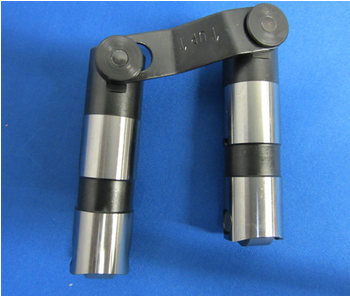
While they sometimes fly under the radar compared to major market players, Hylift-Johnson hydraulic roller lifters offer a specialized appeal. Notably, they produce lifters with specific engine model applications in mind, often filling gaps left by more generic brands. This can be an advantage for owners of vintage or less common engines.
Additionally, Hylift-Johnson offers several performance-focused lifter series that deliver increased RPM stability and optimized characteristics for higher horsepower output. Be prepared to research their product range carefully, as the selection is tighter than universal brands, but competitive options exist within their portfolio.
| Features | Pros | Cons |
|---|---|---|
| Specialized lifters for certain makes/models, high-tolerance manufacturing, some series focused on top-end power. | Can fill needs where broader brands fall short (ex: vintage engines), performance series are competitive with mainstream options. | Often less mainstream visibility than top brands, selection can be more limited, pricing varies according to series. |
Important Note: In-depth research is crucial, regardless of the lifter brand you’re considering. Factors like intended use, build philosophy, and compatibility with other valvetrain components will guide you towards the best choice for your individual engine.
Lifter Setup Do’s and Don’t
Getting lifter setup right is non-negotiable if you want the performance and longevity these components promise. Missteps in even a single area can compromise your entire engine build. Let’s focus on three essentials:
Preload
Think of lifter preload as the precise amount of ‘tension’ the lifter places on the valvetrain. Too little preload creates slack, resulting in noisy operation and lost power. Excessive preload risks holding valves slightly open, impacting compression and potentially leading to catastrophic damage. Finding that ‘sweet spot’ varies depending on your lifter choice and overall valvetrain components. Always follow the manufacturer’s instructions closely.
| Do’s | Don’ts |
|---|---|
| Understand your lifter’s preload requirements (manuals or manufacturer’s website). | Eyeball preload adjustments. |
| Use an accurate preload measurement tool. | Assume all lifters need the same preload, even within a set. |
| Double-check measurements after final torque of rocker arms. | Ignore noisy lifters – this often indicates preload issues. |
Pushrod Sizing
Pushrods might seem simple, but their length is incredibly important. Preload is partially determined by pushrod length – too long or too short throws off the delicate valvetrain geometry. Incorrect pushrod sizing impacts everything from proper lifter function to timing events within your engine. Invest in an adjustable pushrod length checker or seek help from experienced engine builders when determining the correct length for your setup.
| Do’s | Don’ts |
|---|---|
| Measure carefully, even if using pushrod length advertised for your build. | Reuse old pushrods without thorough inspection of wear/length. |
| Utilize adjustable pushrod measuring tools for maximum precision. | Guesstimate pushrod length based on “what worked for someone else.” |
| Consider factors like head gasket thickness and milled blocks which influence length. | Assume all pushrods in a set are identical – slight variations exist. |
Break-in Procedure
A brand-new camshaft and lifters require a careful break-in period. This involves running the engine under specific conditions (RPM, duration) as recommended by the parts suppliers. This initial wear-in allows the cam lobes and lifter contact surfaces to mate properly, promoting lifespan and reducing the risk of immediate failures. Skipping this step is just inviting future trouble.
| Do’s | Don’ts |
|---|---|
| Follow your camshaft and lifter supplier’s break-in guidelines to the letter. | Idle on fresh build for extended periods – lack of pressure is damaging. |
| Use break-in specific oil if recommended. | Use full synthetic oil right away – it lacks necessary additives for wear-in. |
| Vary RPM during break-in as instructed. | Be afraid of 2000-3000 RPM range if that’s specified in the break-in. |
Remember, even the very best, most expensive lifters won’t save you from incorrect setup. Take the time to measure, research, and double-check these points for engine happiness.
Troubleshooting Common Issues
Not all lifter noises are a cause for alarm! It’s essential to understand the difference between normal hydraulic roller lifter operation and sounds that signify looming trouble. Let’s explore some frequent noise concerns and the potential culprits:
Lifter Tick/Noise
Hydraulic roller lifters, by design, will always be slightly louder than solid lifters. You should expect a light, rhythmic ticking—even from a perfectly functioning set. It’s when the noise becomes harsh, erratic, or significantly changes volume that investigation is needed. Here are common scenarios:
- Preload Issues: Incorrect preload (too loose or too tight) often reveals itself through noisy lifters. A single lifter out of adjustment may be identifiable, while full valvetrain noise likely reflects broader setup issues.
- Collapsed Lifters: Internal failure of a lifter is catastrophic. You’ll notice a harsh clattering, potential loss of power, and in severe cases, metallic debris contaminating your oil.
- Worn Valvetrain Components: Aged rocker arms, pushrods, or even excessively worn valvesprings can create ticking that’s mistaken for lifter problems.
- Oil-Related Issues: The choice of oil (viscosity, additives) influences how quickly lifters ‘pump up’ and bleed down. Too thick oil, or oil system restrictions can leave lifters noisy.
Lifter “Pump Up”
At high RPMs, a correctly functioning lifter must bleed down its internal oil pressure fast enough to prevent the valve from ‘hanging open.’ When a lifter “pumps up,” the valve is held slightly open longer than intended, sacrificing top-end power and introducing the risk of engine damage. Causes include:
- Incorrect Oil: Excessive oil viscosity or restrictions in the oiling system hinder normal lifter operation.
- Weak Valvesprings: Springs unable to rapidly close the valve against a pumped-up lifter exacerbate the issue.
- Lifter/Camshaft Mismatch: Lifters designed for moderate RPMs may bleed down too slowly when paired with an aggressive camshaft profile.
Troubleshooting Tips
- Isolate: If possible, try to determine if the noise is from a single lifter or widespread. This narrows down your diagnosis.
- Stethoscope: A mechanic’s stethoscope is invaluable for pinpointing the loudest area, guiding further disassembly.
- Change Only One Variable: When addressing potential issues, make one change at a time (adjust preload, swap one lifter, etc.) to prevent confusing the true cause.
Historical Perspective: The Evolution of Hydraulic Roller Lifters
In the beginning, there were solid lifters – a reliable, time-tested design but demanding regular valve lash adjustments. Hydraulic lifters aimed to offer automatic adjustability for quieter, maintenance-free performance. Their initial reputation was tied to leisurely cruisers, not serious horsepower.
Over time, manufacturers focused on developing hydraulic roller lifters capable of facing ever-increasing RPM demands and aggressive cam profiles. Enhancements such as:
- Improved internal components: Stronger plungers, springs, and precision check valves allowed for higher sustained RPM.
- Advanced metering designs: Optimized bleed-down rates led to better high-RPM valve control compared to early hydraulic lifters.
- Tighter tolerances: Modern manufacturing standards greatly reduce lifter-to-lifter variations, important for overall engine consistency.
Beyond the Brand: When (and Why) to Consider Custom Lifters
When off-the-shelf lifers simply won’t suffice, it’s time to talk custom. Prime scenarios include:
- Highly specialized, bespoke builds: Race engines pushing power and/or RPM limits often necessitate lifters tailored to their exact cam design.
- Unusual/unique engine combinations: Older engines swapped with modern camshafts may lack ready-made lifter solutions.
- Problem-solving: If you’ve been chasing lifter gremlins unsuccessfully, consultation with a cam designer and lifter specialist might be the solution.
Note: Custom lifters come with a hefty price tag and potential wait time. It’s the ‘when-all-else-fails’ resort for most builds.
Lifters in the Broader Engine Build
Let’s reiterate how lifters fit into the greater puzzle:
- Camshaft Dictates Your Needs: Cam specs like the lift, duration, and lobe profile strongly influence your lifter choice. Think matching aggression levels here.
- Overall Valvetrain Compatibility: Everything has to sing together – valvesprings sized to the cam and lifters, rockers with the correct ratio, and pushrods made from materials up to the challenge.
- Oil Considerations: Thicker oils may slow lifter “pump up”, good for some builds but problematic if a fast-acting profile is required. Lighter oils promote speed but may need lifter designs catering to that specifically.
Real-World Buyer Profiles
Your priorities when choosing lifters shift based on your build and budget reality. Let’s break down a few common scenarios:
The Street & Strip Enthusiast
- Needs: A balance of reliability and performance without breaking the bank. Must handle weekend cruises and track day abuse equally well.
- Likely Brands: COMP Cams, Morel (mid-tier), Lunati Link-Bar with a cautious eye on performance specs fitting the cam.
- Considerations: Pre-load consistency is key for this dual-role scenario. Opting for mid-tier lifters often yields the best value proposition.
The Budget Builder
- Needs: Functional lifters on a tight budget. Top-tier features are outweighed by affordability, but total junk is off the table too.
- Likely Brands: Lunati (entry-level), house-brand/remanufactured parts (with caution), sometimes even clean used stock-type lifters if a mild build.
- Considerations: Being honest about performance goals is crucial here. A mild cam will play well with less expensive lifters, while pushing your luck risks rapid failure.
The No-Compromise Racer
- Needs: Lifters are one piece of a finely honed machine. Every gram, every thousandth of an inch matters. Failure is not an option.
- Likely Brands: Isky, Morel (top-tier series), sometimes custom-spec designs tied directly to their camshaft of choice.
- Considerations: Lightness, high RPM stability, and compatibility with aggressive spring pressures are all top priorities. Cost is secondary to these concerns.
FAQ Section
Can I mix and match lifter brands?
Not advisable. Lifter tolerances vary from brand to brand, potentially leading to uneven preload across your engine.
Do hydraulic roller lifters need adjusting?
This is where they shine! Generally, they are ‘set it and forget it’ once proper preload is initially established. (Note: Some race-focused lifters may have lash adjustability)
How long do performance hydraulic roller lifters last?
Too many variables for a simple answer. Top-tier lifters matched to a compatible setup can handle seasons of abuse. Budget lifters pushed hard may need frequent replacement. Emphasize maintenance (clean oil, good valvetrain components) as a top factor in any lifter’s lifespan.
I have a mild build, are expensive lifters worth it?
Probably not. The gains will be minimal or even detrimental if your cam/spring setup doesn’t require what that premium lifter offers. This is where matching building philosophy to parts matters.
My lifters are noisy, is that bad?
Some lifter ticks are normal. However, a sudden change in noise level or erratic ticking demands investigation (refer back to your troubleshooting section).
